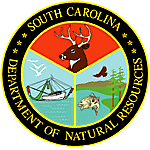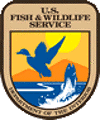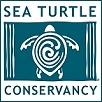In 1998, the South Carolina Loggerhead Sea Turtle Study began satellite tracking sea turtles. Biologist Sally Murphy, South Carolina Department of Natural Resources – Marine Turtle Conservation Program, has released satellite tagged loggerhead sea turtles from Cape Island in Cape Romain National Wildlife Refuge as part of a research project to determine dispersal patterns, migratory pathways and foraging habitat use of loggerhead sea turtles during the non-nesting period.
The loggerhead turtle is the state reptile of South Carolina. The numbers of loggerhead nests deposited on beaches in South Carolina have declined significantly during the last two decades. It is extremely important that to understand the relationship between these foraging areas and commercial fishing activities adult loggerheads after the summer nesting season in order to implement management practices.
The beach selected for this study is Cape Island in the Cape Romain National Wildlife Refuge. Cape Island is the most significant loggerhead nesting beach north of Florida, with an average of 1,000 nests per season.
    |
For more information on sea turtles, check out the Sea Turtles Information section of our website.
Click on the turtle’s name to see a map of its movements.
Turtles tracked in 2003
The five adult female loggerhead turtles instrumented with satellite transmitters were named in honor of early and recent sea turtle pioneers in South Carolina. These turtles, like their namesakes are pioneers, providing us with new and needed information on the areas and habitats used by this important segment of the sea turtle population. A short biography is provided with each turtle’s name. We hope this will prove to be of interest, especially for students in our state.
BALDWIN’S BELLE – Baldwin’s Belle (#40986, released 7/8/03) is named for Bill Baldwin. William P. Baldwin, Jr. was a biologist with the U.S. Fish and Wildlife Service and Junior Refuge Manager at Cape Romain National Wildlife Refuge in the late 1930’s. With almost no background literature to guide him, he conducted (along with John Lofton) one of the most complete and excellent natural history studies on nesting loggerhead turtles at Cape Island. This work was the beginning of marine turtle research in the Americas. It was being prepared for publication when World War II began and as a result of the war, it was put aside. David Caldwell later published “The Loggerhead Turtles of Cape Romain, South Carolina” as an abridged and annotated manuscript in 1959. Bill Baldwin went on to become the chief biologist for the southeast refuge system and later made a career selling historic coastal plantations to conservation buyers.
COWGILL’S CHARM – Cowgill’s Charm (#40990, released 7/8/03) is named for Dr. Robert (Bob) Cowgill who retired to Kiawah Island, SC after a career teaching biochemistry at USC Berkeley, University of Colorado and Wake Forrest University. At Kiawah, he became involved with the nest protection project at a time when it was about to flounder. It was saved and under his direction from 1988-2000, became one of the best organized in the state. He was the first chairman of the town’s Wildlife Committee, organized the Kiawah Naturalist Club, and authored three books about wildlife on the island. And even though he no longer resides there, he contributes sea turtle stories on the Kiawah web page in “Cowgill’s Corner”. Thanks to Dr. Cowgill, Kiawah is the longest running sea turtle project in South Carolina.
LOFTON’S LASS – Lofton’s Lass (#40987, released 7/8/03) is named for John M. Lofton, Jr. Johnny Lofton was a Wildlife Technician and spent the summer of 1939 on Cape Island with Bill Baldwin conducting one of the first systematic studies of loggerhead turtles. They worked the entire island by foot, while staying in a shack set well back from the beach in a scorching, breezeless sump, smearing burnt engine oil on the screens to keep out the gnats. They had to carry their water supply over a half mile down a narrow, sandy, cactus-lined path. Later in life John Lofton obtained a law degree from Duke University and became editor of The St. Louis Dispatch newspaper.
MARLOW’S MAIDEN – Marlow’s Maiden (#40989, released 7/10/03) is named for Chris Marlow. Chris Marlow, was a native of Pawleys Island, SC. He became a member of the Sea Turtle Stranding and Salvage Network in 1982. In 1989 Chris, along with Jeff McClary, organized SCUTE (South Carolina United Turtle Enthusiasts), a volunteer group covering over 50 miles of coastline. They were also instrumental in getting Georgetown County to pass the first beachfront lighting ordinance in the state, and partnered with Santee Cooper (a state electricity producer) to shield lights and produce and distribute “Lights Out” TV spots and bumper stickers. In 1993, the South Carolina Wildlife Federation honored SCUTE with the Best Conservation Organization award.
SAMWORTH’S SEAFARER – Samworth’s Seafarer (#40988, released 7/8/03) is named for Thomas G. Samworth. Mr. Sam was born in Delaware and was an inventor for the DuPont Company. He was the first editor of The American Rifleman and published more than 45 books on firearms, ballistics and hunting. In 1941 he moved to Dirleton Plantation in South Carolina, which he donated in 1963 to the then SC Wildlife and Marine Resources Department. Mr. Sam began his loggerhead research on South Island in 1968 when he was in his eighties. He conducted daily patrols with the aid of a crutch and coined colorful phrases for depredated nests, such as “cooned-out” and “crabbed-out”. His data is a benchmark for the nesting effort at South Island.Samworth’s Seafarer left the nesting beach and is the only turtle out of the five in 2003 that migrated southward. (However, three turtles in 1998 did migrate to the south). When she reached waters off of north Florida, the signals suddenly reversed course, which none of our loggerheads have ever done. During certain times the speed of travel was greater than five km/hour. This is twice the speed of migrating loggerheads. Just off the south tip of Hilton Head Island, South Carolina, the signals turned and headed towards shore as if following the channel into Calibogue Sound. The signals ceased here. These movements and velocity would suggest that the transmitter (turtle?) was involved with a boat. However, the surface time counter in the transmitter indicated that it was still in the water over 90% of the time. This atypical migratory track is a mystery.
Satellite transmitters were attached to five adult female loggerheads while they were on the nesting beach during the night of July 7, 2002.
As part of the 2002 project, SCDNR and STSL partnered with the South Carolina Aquarium to organize a “Name the Turtles” contest for the 2002 satellite tracked turtles. Interested participants submited names for each of the turtles through the South Carolina Aquarium’s website. Winning names were selected and the winners are listed with each turtle below.
GULLAH GAL – Gullah Gal was 36 3/4 inches in shell length. A satellite transmitter (number #36424) was attached to her shell. Thanks to Susan Ahearn of Charleston, SC for suggesting the name “Gullah Gal.”
SARAH – Sarah was 39 1/2 inches in shell length. A satellite transmitter (number #36425) was attached to her shell. Thanks to Lois Rodgers of Charleston, SC for suggesting the name “Sarah.”
BIG MAMA – Big Mama was an impressive 43 3/4 inches in shell length. A satellite transmitter (number #36426) was attached to her shell. Big Mama had been seen before. She was originally flipper tagged in 2000 on Cape Island, SC during morphometrics study. She was the same length. Thanks to Cheryl Burnett of Sheldon, SC for suggesting the name “Big Mama.”
JESSAMINE – Jessamine was 41 1/4 inches in shell length. A satellite transmitter (number #36427) was attached to her shell. Thanks to Carol Bundy of Columbia, SC for suggesting the name “Jessamine.”
CELESTE – Celeste was 39 inches in shell length. A satellite transmitter (number #36428) was attached to her shell. Thanks to Mildred Brown of Hanahan, SC for suggesting the name “Celeste.” Celeste was moving north towards Cape Hatteras when she suddenly entered the main body of the Gulf Stream current. She is now much further off the continental shelf than researchers expected and is in Atlantic gyre. Researchers will continue to monitor her movements to see what she does. Stay tuned!
Turtles tracked in 1998
Five turtles were satellite tagged in South Carolina for the first time, but the results were inclusive since two went north and three went south.
CAROLINE – Caroline, originally called No Name, was satellite tagged during a non-nesting emergence. She remained near Cape Island for about two weeks and probably laid another clutch. She then headed south like Flora and Flag and is currently offshore of St. Augustine, Florida. She was the smallest of the tagged loggerheads, measuring 89.5cm in length.
FLAG – Flag was satellite tagged during a non-nesting emergence, also called a “false crawl”. She apparently nested several nights later and began moving south about 40 miles offshore For the last month, Flag has taken up residence east of Flagler Beach, Florida. She measured 94.6cm long.
JACKIE – Jackie was satellite tagged after she had nested. She had two large, deep prop cuts on the rear of the carapace, but they were old and healed over. Jackie also had a very large barnacle on the top of her head that reminded the researchers of the pillbox hats that were fashionable in the early 1960s. She measured 99cm long and remained near Cape Island for two weeks and probably laid another clutch. After that Jackie moved north around Cape Hatteras, North Carolina and is currently offshore of southern New Jersey.
FLORA – Flora was satellite tagged during a non-nesting emergence. She remained near Cape Island for two weeks and then at 1:30am on July 27 she probably nested. Flora then headed south along the same general route as Flag, but she made it all way to The Oculina Bank near Vero Beach, Florida. She measured 91.4cm long.
VIRGINIA – Virginia was satellite tagged during a non-nesting emergence. She also remained near Cape Island for two weeks and probably laid another clutch. She then headed north on a parallel route with Jackie. Virginia moved around Cape Hatteras and spent her time during Hurricane Bonnie east of Norfolk, Virginia. She measured 99cm long. As the northern waters become colder, Viginia has quickly moved south to warmer waters.
More detailed information about the study can be obtained from the Marine Resources Division, South Carolina Department of Natural Resource.
This research is funded in part with a grant from the National Marine Fisheries Service under a Section 6 of the Endangered Species Act Cooperative Agreement. Maps created by the Sea Turtle Conservancy.